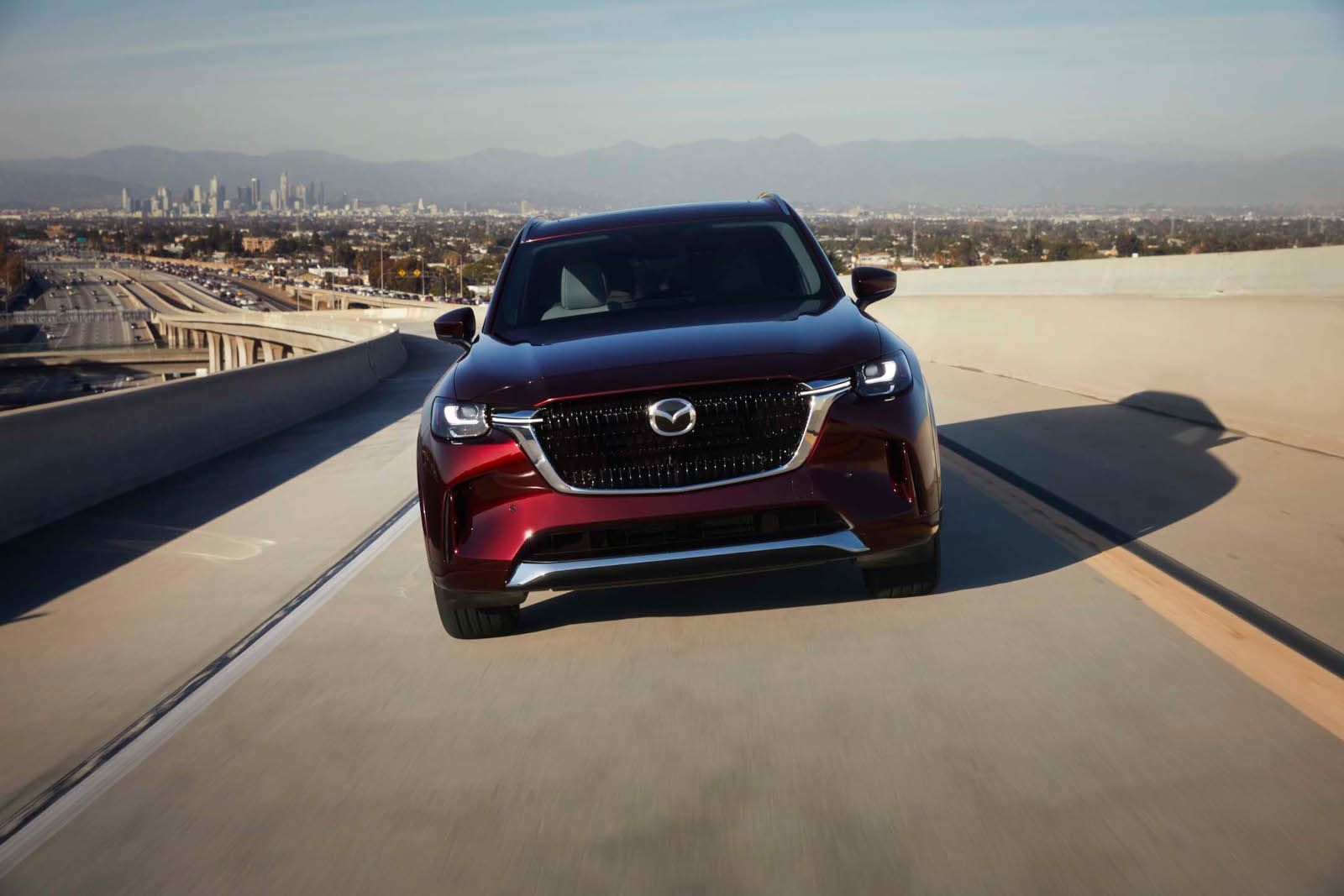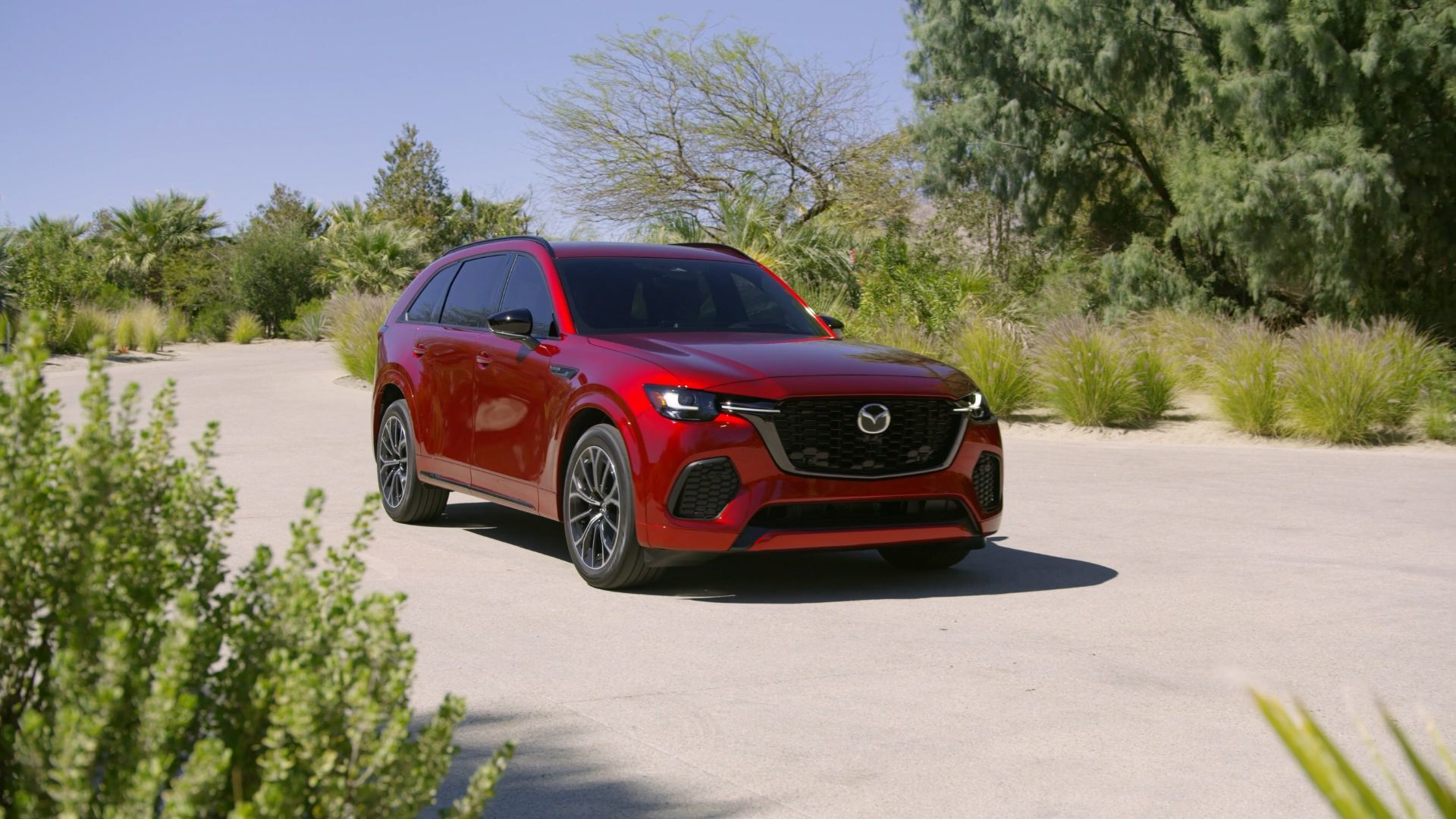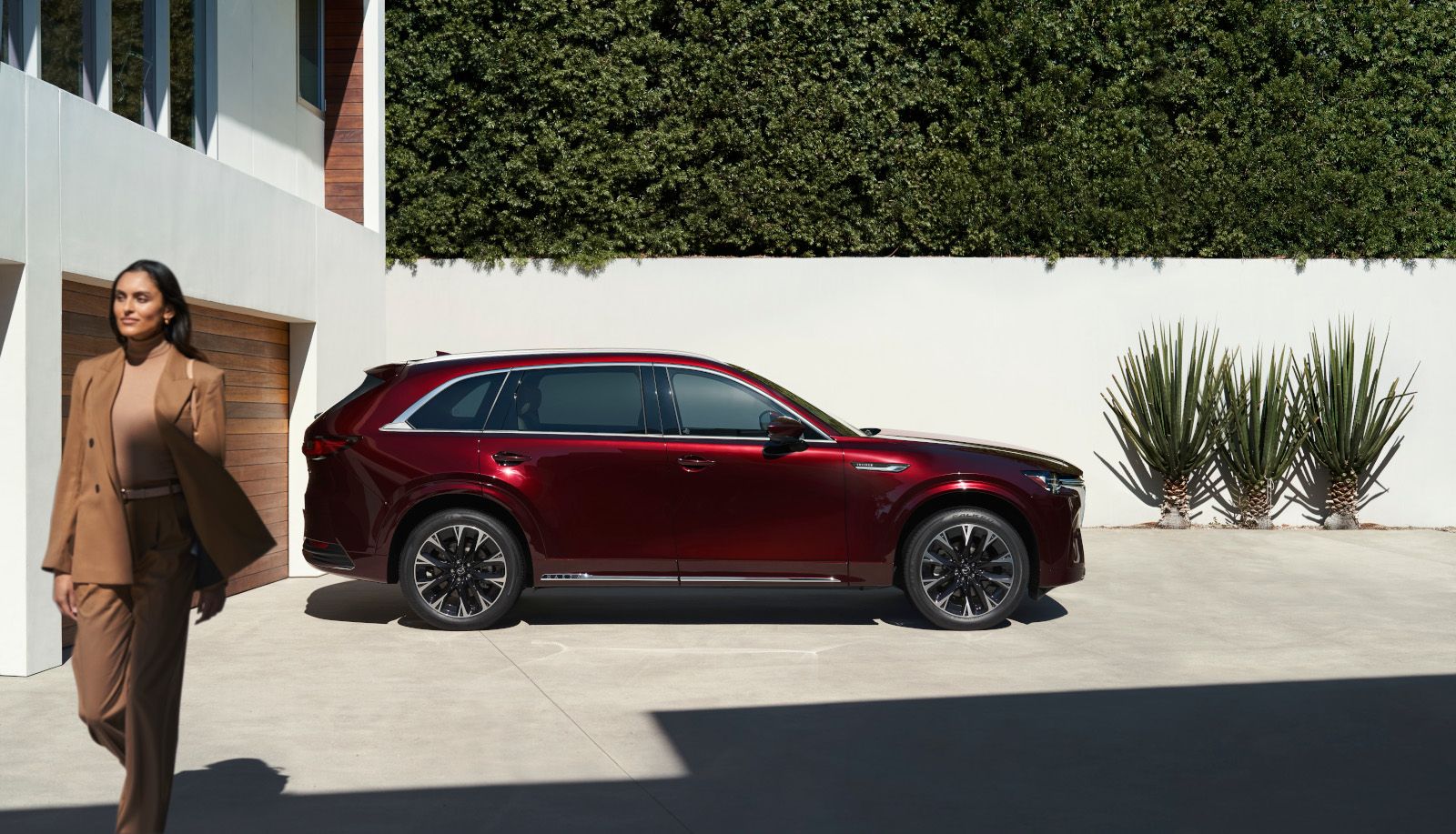How i-Activ AWD and Winter Tires Work Together for British Columbia Winter Driving
November 17 2025,

British Columbia presents winter driving challenges that shift dramatically within short distances. Metro Vancouver drivers navigate coastal rain in Burnaby, then encounter snow-covered mountain passes on the Sea-to-Sky Highway toward Whistler. Weekend trips to the Interior involve icy conditions, while daily commutes may stay entirely on wet pavement. This geographic diversity makes winter preparation more complex than simply installing snow tires or relying on all-wheel drive.
The most effective winter safety strategy combines both technologies: Mazda's i-Activ AWD system manages power distribution to maintain traction, while winter tires provide the grip needed for acceleration, cornering, and—most critically—braking. Understanding how each technology functions, and why neither alone provides complete winter protection, helps British Columbia drivers prepare appropriately for varied seasonal conditions.
Understanding i-Activ AWD Technology
Mazda's i-Activ AWD system operates as a predictive technology rather than a reactive one. The system continuously monitors 27 separate inputs from sensors distributed throughout the vehicle, analyzing data every 10 milliseconds to anticipate traction needs before wheel slip occurs. This predictive approach provides advantages over traditional AWD systems that react only after detecting lost traction.
The sensor array monitors wheel speed at all four corners, steering angle, throttle position, brake application, and outside temperature. Additional sensors track windshield wiper activity—an indicator of wet or snowy conditions—and measure weight distribution as passengers and cargo load changes. The system processes this information through sophisticated algorithms that predict when and where traction loss may occur, then proactively distributes torque between front and rear axles within milliseconds.
During normal dry conditions, i-Activ AWD sends most power to the front wheels for efficiency. When sensors detect conditions suggesting reduced traction—temperature dropping toward freezing, wipers activating, or steering inputs becoming more aggressive—the system begins sending power rearward before wheel slip occurs. This preemptive torque distribution maintains stability and prevents the loss of control that happens when systems wait for wheels to spin before engaging.
The system works seamlessly with other Mazda technologies. G-Vectoring Control Plus adjusts engine torque during cornering to shift weight forward, increasing front tire grip. Dynamic Stability Control and Traction Control System intervene if wheel slip does occur despite i-Activ AWD's predictions. Hill Launch Assist prevents rollback when starting on slopes. Together, these systems create layered protection for British Columbia's varied terrain.
Why Winter Tires Matter Even With AWD
All-wheel drive helps vehicles accelerate and maintain momentum in slippery conditions by distributing power to wheels with the best traction. This advantage creates a common misconception: drivers assume AWD provides complete winter protection. The reality is more nuanced. AWD assists with acceleration and forward momentum, but provides no benefit for turning or stopping—the two situations where winter accidents most commonly occur.
The physics are straightforward. Traction depends on the contact patch between tire and road surface—the small area where rubber meets pavement or ice. All-season tires use rubber compounds that become stiff and lose grip when temperatures drop below 7°C. The tread pattern, optimized for dry and wet summer conditions, cannot effectively channel snow or maintain contact on ice. When you attempt to turn or brake on cold pavement, all-season tires simply slide rather than grip, regardless of whether power goes to two or four wheels.
Winter tires use rubber compounds specifically formulated to remain flexible in cold temperatures. The compound maintains grip as temperatures drop below freezing—conditions where all-season tires become rigid. The tread pattern features deeper grooves and more biting edges to channel snow and slush away from the contact patch while maintaining surface grip. The result is measurably shorter stopping distances and better cornering control on cold, wet, snowy, or icy surfaces.
Testing demonstrates the difference clearly. A vehicle traveling 50 km/h on ice needs approximately 60 metres to stop with all-season tires. The same vehicle with winter tires stops in roughly 45 metres—a 15-metre reduction that can mean the difference between a controlled stop and a collision. AWD cannot change these stopping distances. It helps you go, but winter tires help you turn and stop.
Metro Vancouver's typical winter conditions—hovering near freezing with frequent rain—actually present challenging scenarios for all-season tires. The pavement remains cold enough that all-season rubber loses flexibility, yet wet conditions reduce friction further. Winter tires provide grip advantages even when roads appear clear but temperatures stay below 7°C.
Winter Tire Timing for Metro Vancouver
British Columbia law does not mandate winter tires for most Lower Mainland highways. However, mountain routes commonly traveled by Metro Vancouver residents require them seasonally. Highway 99 to Whistler, the Coquihalla Highway (Highway 5), and mountain passes throughout the Interior enforce winter tire requirements from October 1 to March 31, with extensions possible if conditions warrant.
The legal requirements specify tires marked with the three-peak mountain snowflake symbol or the M+S (mud and snow) designation. However, these designations carry different performance levels. The three-peak mountain snowflake symbol indicates the tire met specific traction testing standards in snow conditions. The M+S designation simply indicates tread pattern design—the tire has deeper grooves than summer tires but may use all-season rubber compounds that stiffen in cold weather.
For optimal British Columbia winter performance, tires carrying the three-peak mountain snowflake symbol provide measurably better traction than M+S-only tires. If your winter driving includes mountain highways or Interior destinations, choosing tires with this symbol ensures compliance and superior grip.
Installation timing involves more than meeting legal requirements. The common wisdom of "wait until first snow" results in last-minute rush appointments and potential delays. A more strategic approach considers temperature patterns rather than precipitation. Once daytime temperatures consistently stay below 7°C, winter tire compounds begin providing advantages over all-season tires, even on dry pavement.
Metro Vancouver typically reaches consistent cold temperatures in mid-to-late November. Scheduling winter tire installation in early November avoids the rush, ensures availability of preferred tire models, and provides protection before the first snow arrives unexpectedly. Spring removal timing is more flexible—waiting until consistent temperatures above 7°C return prevents excessive winter tire wear but maintains safety during late-season cold snaps.
Choosing Winter Tires for Mazda Vehicles
Selecting appropriate winter tires involves matching tire specifications to your Mazda model and understanding the performance trade-offs between tire categories. Each Mazda model specifies tire sizes in the owner's manual and on the tire placard inside the driver's door jamb. Maintaining these specifications ensures proper speedometer calibration, clearance within wheel wells, and correct load ratings.
The 2026 Mazda3 and Mazda3 Sport typically use 215/45R18 tires on higher trims, though base models may use 16-inch wheels. The CX-30 commonly runs 215/55R18 tires, while the CX-5 uses sizes ranging from 225/55R19 to 225/50R19 depending on trim. Larger models like the CX-70 and CX-90 use 265/55R19 or 275/45R21 tires. Confirming your specific model's requirements before shopping prevents fitment issues.
Winter tire categories offer different balances of performance, noise, wear, and cost. Dedicated winter tires provide maximum cold-weather traction through aggressive tread patterns and specialized rubber compounds. These tires excel in snow and ice but wear quickly on bare pavement and generate more road noise. They represent the optimal choice for regular mountain driving or Interior destinations where snow and ice are common.
Performance winter tires balance cold-weather traction with refined on-road behavior. The tread patterns remain less aggressive than dedicated winter tires, reducing noise while maintaining grip on cold, wet pavement. The rubber compounds work effectively in temperatures below 7°C but don't achieve the extreme low-temperature flexibility of dedicated winter tires. Performance winter tires suit Metro Vancouver drivers who occasionally travel to mountain destinations but spend most winter mileage on cleared city streets and highways.
All-weather tires attempt to combine summer and winter capabilities in a single tire. These carry the three-peak mountain snowflake symbol and legally qualify as winter tires, yet they compromise between seasonal extremes. All-weather tires provide adequate winter traction for mild conditions but don't match dedicated winter tire performance in deep snow or ice. They avoid the seasonal changeover inconvenience but wear faster and offer inferior performance in both summer heat and winter cold compared to dedicated seasonal tires.
Studded winter tires use metal studs embedded in the tread to penetrate ice and provide mechanical grip. British Columbia permits studded tire use from October 1 to April 30, though they damage bare pavement and create noise. Studded tires deliver superior traction on ice but perform worse than non-studded winter tires in snow or on cold, dry pavement. They suit drivers facing regular icy conditions—coastal highways subject to freezing rain, or Interior routes with persistent ice. Metro Vancouver's typically wet winter conditions rarely justify studded tires unless you regularly travel to ice-prone areas.
How i-Activ AWD and Winter Tires Complement Each Other
The combination of i-Activ AWD and proper winter tires creates layered protection that addresses different aspects of winter driving safety. Winter tires provide the fundamental traction—the grip between rubber and road surface that enables acceleration, turning, and stopping. All-wheel drive optimally distributes power across that available traction to maintain momentum and stability.
When accelerating from a stop on snowy pavement, winter tires create the initial grip needed to move forward. The i-Activ AWD system then monitors which wheels have the most traction and sends power accordingly. If the front wheels begin to slip because they're on a slick patch, the system redirects torque rearward within milliseconds. This continuous adjustment maintains smooth acceleration without wheel spin, using the traction winter tires provide as effectively as possible.
During cornering on slippery surfaces, winter tires maintain lateral grip—the sideways traction needed to change direction rather than sliding straight. The i-Activ AWD system works with G-Vectoring Control Plus to manage weight transfer, keeping optimal load on the tires that need it most. If the system detects the rear end beginning to slide outward, it can adjust power distribution to help pull the vehicle through the corner rather than allowing a spin.
The most critical scenario—braking—relies primarily on winter tire grip. AWD provides no advantage when slowing or stopping. However, if you need to brake while simultaneously turning (a common emergency maneuver), i-Activ AWD helps manage the available traction to maintain stability during the combined steering and braking inputs. The system coordinates with anti-lock brakes and stability control to prevent the vehicle from spinning or sliding off course.
On British Columbia's varied winter roads, this combination adapts to changing conditions. Dry highway driving in cold temperatures benefits from winter tire grip and normal front-biased power distribution. Encountering wet snow on the approach to Whistler triggers the i-Activ system to increase rear torque distribution while winter tires maintain the grip needed for that power to transfer effectively. Descending icy mountain passes relies on winter tire stopping power while AWD helps maintain control during necessary steering corrections.
Winter Preparation Checklist for BC Drivers
|
Task |
Timing |
Benefit |
|---|---|---|
|
Install winter tires with three-peak mountain snowflake symbol |
Early November |
Maximum cold-weather traction before first snow |
|
Check tire pressure weekly |
Throughout winter |
Cold air reduces pressure; proper inflation maintains grip |
|
Verify windshield wipers and washer fluid |
Before winter |
i-Activ AWD uses wiper activity as traction indicator |
|
Test battery condition |
October |
Cold weather reduces battery capacity |
|
Inspect brake pads and fluid |
October |
Winter driving requires maximum braking performance |
|
Keep fuel tank above half full |
Throughout winter |
Prevents fuel line freeze; adds vehicle weight for traction |
|
Carry emergency kit |
Throughout winter |
Blanket, flashlight, snacks, phone charger for unexpected delays |
|
Review i-Activsense settings |
Before winter |
Ensure systems enabled in Mazda Connect menu |
Additional Winter Considerations for British Columbia Driving
Beyond tires and AWD, several factors affect winter safety for Metro Vancouver and British Columbia drivers. Visibility becomes critical during shorter days and frequent rain or snow. Ensuring headlights, taillights, and turn signals function properly prevents accidents caused by other drivers failing to see you. The automatic headlight system standard on all Mazda models helps, but manually activating lights during heavy rain or snow improves visibility further.
Windshield condition affects both visibility and the i-Activ AWD system's function. Chips or cracks reduce clarity during precipitation and may prevent the system from accurately detecting wiper activity. Replacing damaged windshields before winter maintains both safety and system effectiveness. Quality wiper blades designed for winter conditions clear snow and ice more effectively than worn all-season blades.
Following distance must increase during winter conditions. Winter tires improve stopping distances compared to all-season tires, but they still require more distance on snow or ice than on dry pavement. The general recommendation of three to four seconds following distance in summer should extend to six to eight seconds during winter precipitation. British Columbia's wet winter conditions create hydroplaning risk—another reason increased following distance provides safety margin.
The i-Activsense safety systems integrated throughout Mazda's lineup provide additional winter protection. Mazda Radar Cruise Control with Stop & Go maintains safe following distance automatically. Smart Brake Support Front can detect slowed traffic ahead and apply brakes if you don't react quickly enough—particularly valuable during sudden whiteout conditions or when snow reduces visibility. Lane-keep Assist helps maintain lane position when snow obscures lane markings.
Learn More at Metrotown Mazda
British Columbia's diverse winter conditions require layered preparation. Mazda's i-Activ AWD system provides sophisticated traction management that adapts to changing conditions, but it works most effectively when paired with proper winter tires. The combination addresses different aspects of winter safety—AWD optimizes power distribution while winter tires provide the fundamental grip needed for acceleration, turning, and stopping.
Visit Metrotown Mazda in Burnaby to discuss winter tire options for your specific Mazda model and driving patterns. Our team can recommend appropriate tire categories based on your typical winter destinations—whether daily Metro Vancouver commuting, regular Whistler trips, or Interior travel—and help schedule installation before British Columbia's winter conditions arrive.






